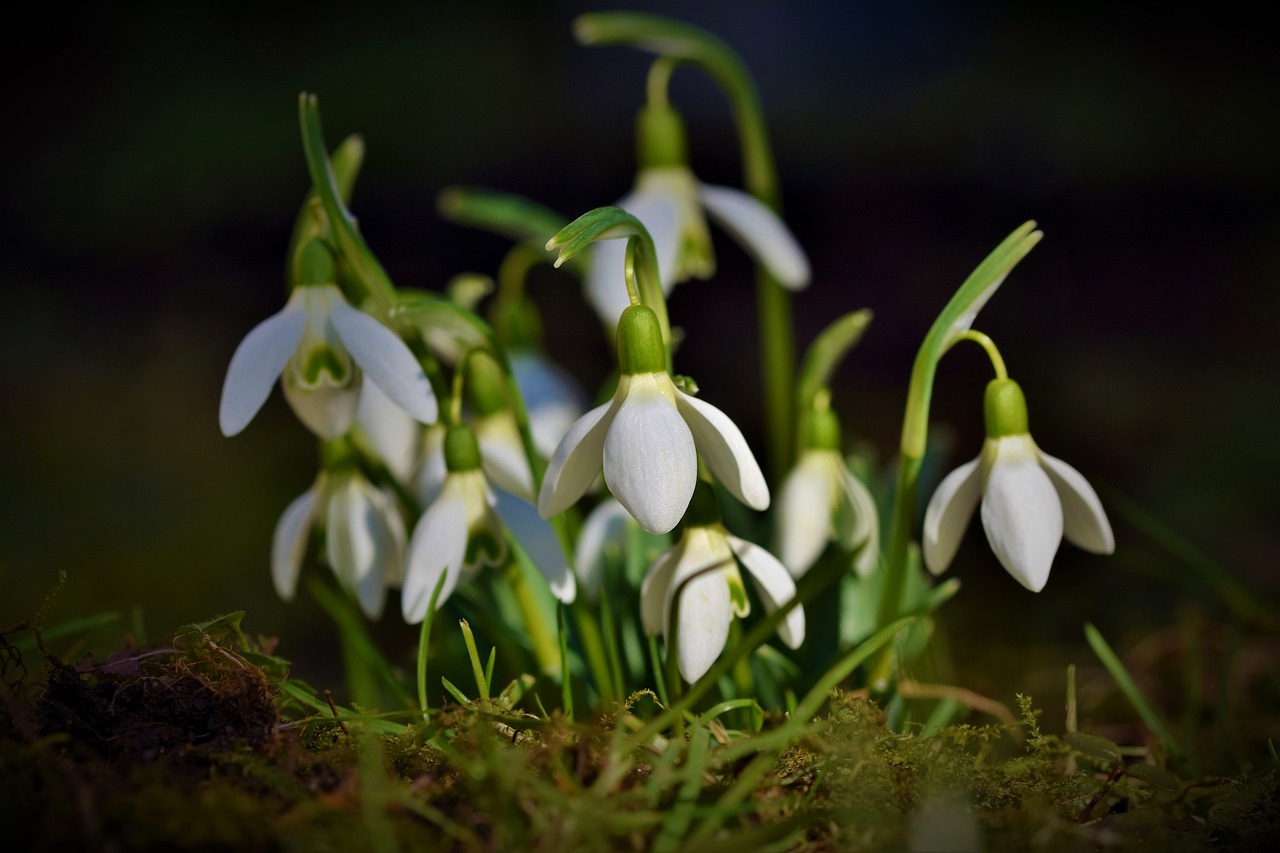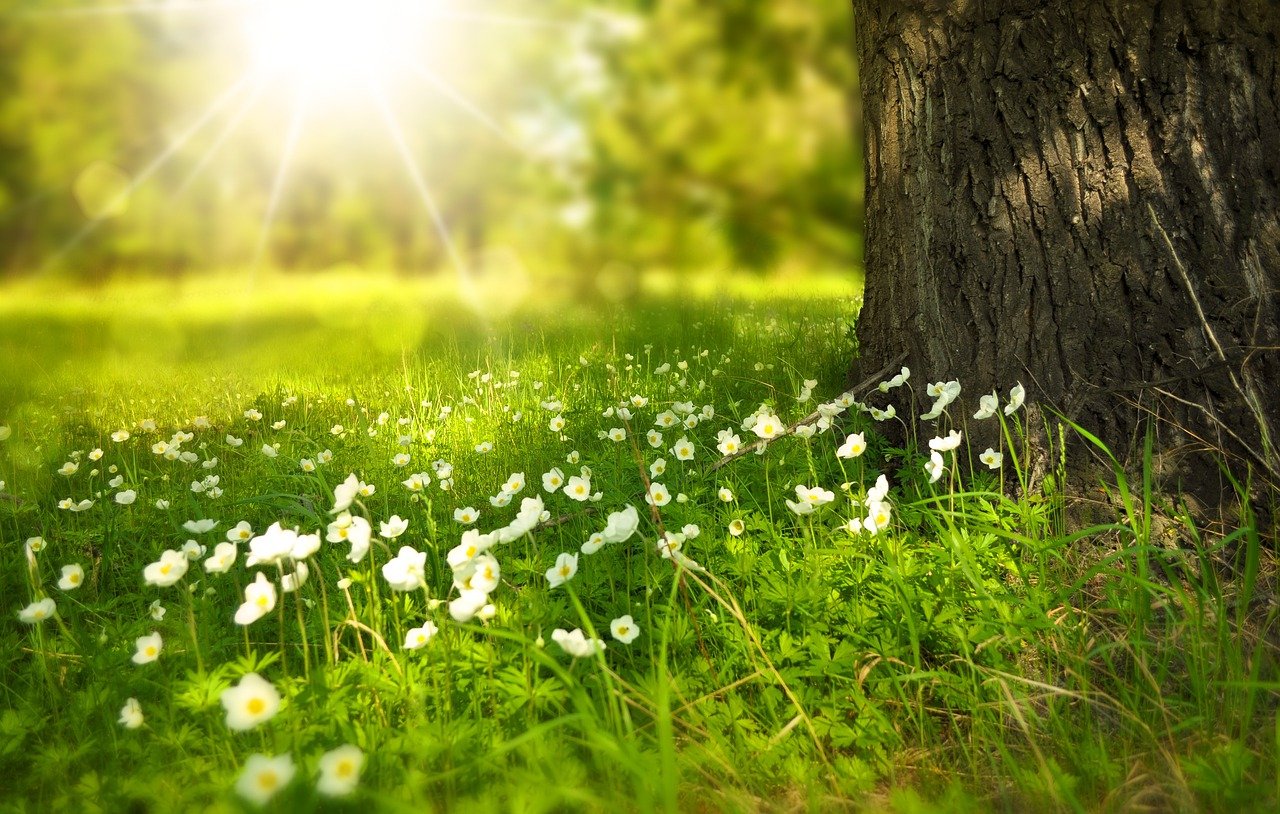Winter Gardening Guide
For many of us, winter is a time to put the garden to bed, and spend the long, dreary days dreaming of the warm days to come and the plants we’ll grow come spring. When the garden and seed catalogs start arriving in February, that’s usually a sign that it’s time to start thinking about getting out and working in the dirt, choosing which new varieties of fruits, vegetables, and flowers we want to add to our old favorites. And in the meantime, we buy produce at the grocery store, waiting for that first harvest to come during the summer months.
Although growing things like tomatoes and squash outdoors are not practical for most of the country, the winter months don’t actually have to mean that you have to put your gardening entirely on hold. Even after the snow falls, you can still grow certain plants indoors, and get ready for the season to come.
Of course, you don’t want to forget about your outdoor gardens, so you’ll want to prepare them for the winter to make your garden more successful in the spring as well. In short? There are plenty of ways to exercise your green thumb during the colder months and prepare Garden for Winter
Putting Your Gardens to Bed
A great deal of your winter garden prep depends on where you live, and your gardening zone. Before you do anything, then, you need to know your zone. Investing in a guide like the Farmer’s Almanac can give you general predictions about what to expect over the winter, but it’s impossible to determine exactly what will happen that far in advance, so it’s best to simply prepare for a “typical” winter in your zone.
For those in northern climates, this generally means putting your garden “to bed” for the winter. This usually means adding a layer of mulch to your garden beds before the weather turns cold. Mulch not only helps keep weeds out of the garden and helps it look nice, it can also help keep your soil in good shape over the winter.
Bare soil gets colder faster, which allows it to lose moisture more quickly. By adding a layer of mulch, you help keep the soil a bit warmer longer and maintain moisture levels. It’s not going to keep your annuals alive, and your perennials will still go dormant, but the organic mulch will help protect delicate roots and bulbs, and create a nice warm winter home for wildlife that will be beneficial to your garden in the spring.
Be sure, though, to remove all old mulch and existing weeds from the garden before you all mulch. Otherwise, the weeds will just return in the spring when the ground warms up.
Before you mulch, assess whether you need to dig up any bulbs or prune any plants before the snow flies. While fall-planted bulbs like tulips, daffodils, crocus, alliums, and hyacinths are cold-hardy and will survive even the harshest winters, other bulbs should be taken out of the soil and stored in a cool, dry place for the winter, then replanted in the spring. These bulbs include dahlias, begonias, and canna lilies.
Dig up bulbs before the first frost (gently, without damaging them with your shovel or spade), shake off any excess dirt, and allow the bulbs to dry in the sun for a week before storing them. Ideally, you should store bulbs in a mesh bag filled with peat or sawdust, in a dark, dry place with a temperature between 50 and 70 degrees. If you aren’t sure whether you need to store a bulb, or how to best go about storing them, check with a local gardening center or the bulb packaging for advice.
And don’t forget – while you are digging up dormant bulbs, you can plant more fall-planted bulbs for extra color in the spring. In fact, if you have daffodils and crocuses in your flower beds, it’s a good idea to replant those bulbs every five years. Otherwise, the plants become too crowded, and will become uneven and less healthy.
In warmer climates (typically Zones 7 and above) you don’t have to worry about digging up your bulbs. You can also till your garden beds before the colder months to improve the soil. Tilling organic matter like the remnants of plants and yard debris into the soil helps create compost over the winter, and you’ll have richer soil in the winter.
If your garden is large, only till every few rows to ensure that wildlife has a place to stay over the winter. You might want to skip tilling, though, if your garden is on a slope, as the roots of the remaining plants and grasses will help prevent erosion over the winter.
To Prune or Not to Prune?
When the leaves on your plants and shrubs start to die, it’s tempting to pull out the clippers and give them a good haircut. Before you start pruning, though, it’s important to know which plants should be pruned in the fall – and which should get their makeovers in the spring.
Some plants that bloom in the spring, like azaleas, forsythia, rhododendrons, lilacs, and oakleaf hydrangea, have already formed their flower buds by the time fall comes around, so if you cut them back now, you will be cutting off the buds and eliminating any chance of seeing flowers in the spring.
However, other plants will be fine if you prune them in the fall. For example, the Annabelle, Limelight, and PG varieties of hydrangea only flowers on new growth, which doesn’t appear until spring and early summer, so cutting back the stems once the leaves start to turn brown and fall off is fine.
Other plants that should be pruned in the fall include most shrub roses, hibiscus, gardenia, crepe myrtle, butterfly bush, and Angel’s Trumpet. When you do prune, be sure to do it when it’s dry (and will remain dry for a few days) as any type of moisture can spread disease to vulnerable plants.
It’s also best to prune once the weather has turned cold; in fact, some experts suggest waiting until midwinter or at least until the plants have gone dormant before pruning. Doing it too early can weaken the plant, and if it gets too warm, sap can actually rise up into the plant, putting it in danger of dying.
Not to mention, if you wait until the plant is dormant and the leaves fall off, you can see what you are doing and you won’t over prune. Experts also recommend skipping the snip session altogether unless your plants are severely overgrown or there are diseased or dead branches. Most plants are perfectly fine without a haircut and will continue to flower and bear fruit.
Fertilizing Faux Pas
While you might think that it’s a good idea to fertilize your garden beds before the winter hits, that’s actually not a good idea. Fertilizing in the fall actually encourages new growth at a time when plants should be resting and going dormant. Not only does adding fertilizer now interrupt the natural life cycle of the plant, but it’s also likely that any new growth that does occur will just die once the snow and ice arrive.
However, you can add some nutrients to the soil using something that’s readily available: fallen leaves. Chances are, you are going to be raking leaves anyway, so why not use it to nourish your soil? You can do this by creating “leaf mold” from the leaves you’re cleaning up. When you rake the leaves – preferably right after it rains – leave them in a pile to decompose.
After a few weeks, the wet leaves will naturally break down, at least partially, and you can add the decomposed leaves to your garden beds. Not only does the leaf mold add nutrients to the soil, it also blocks light from the soil, killing weeds. Add the leaf mold before you add the fresh mulch, and your flower beds will be healthy and weed-free in the spring.
And speaking of making sure your plants are healthy in the spring, don’t forget to keep watering your plants. As long as the ground isn’t frozen, you should continue to make sure the soil remains moist. In many regions, fall rains take care of the watering for you, but if there are a few days between storms, a good soaking with the hose is necessary. In mild climates, watering throughout the entire winter is necessary.
What Needs to Be Covered?
Typically, most annual plants only need to be covered when the first frost hits, and only if they haven’t shown signs of dying or going dormant yet. For example, if you still have tomato plants that are bearing fruit, you might want to throw a sheet over them if frost is in the forecast to protect the plant. Or, you can just pick any remaining fruits and allow them to ripen in a warm windowsill. Allowing the remaining plants in the garden to go to seed is an option, but don’t be surprised if you find some “wandering” veggies next summer.
However, there are some other plants that might need a bit more protection during the bitterly cold days of winter. This is especially true in areas that don’t receive a lot of snow. When perennials are protected by a thick blanket of snow, they tend to bounce back just fine once spring comes.
In more mild climates that get cold temperatures but not as much snow, a cold snap can pretty much kill any plant in the garden. Unless a plant is cold-hardy, even a single frosty night can mean you’re kissing it goodbye. And it’s not just cold that can kill off less hardy varieties. If your soil isn’t properly drained, moisture can rot the roots of your plants and kill them off.
In most cases, plants that are well established can tolerate winter freeze-and-thaw cycles without too much babying. In fact, most gardeners don’t do anything at all to their established plants beyond adding an extra layer of fresh mulch.
If your plants are recently transplanted (meaning within the last year or two), though, then covering them up before winter is a good idea. For smaller plants, a two- to four-inch layer of bark mulch or pine straw is generally adequate for keeping the roots warm and dry throughout the winter. For vulnerable trees and shrubs, though, more protection is necessary.
Wrapping the plants with burlap and string can help protect them from frost and provide a light windbreak to avoid damage from biting winter winds. If you have plants that aren’t cold-hardy at all — such as a hibiscus in New England — it’s best to bring the plant inside or into a warm shelter for the winter, unless you want to invest in a new plant in the spring.
Keep in mind that covering your trees and shrubs is only necessary when the temperatures are below freezing. If you leave the covers on once the temperatures warm up – even for a few days – the warmth under the cover can trick the plant into “waking up,” and new growth will begin. This new growth will die once the temperatures drop again, so pay close attention to the forecast and make sure that your plants are protected, but not too warm.
Growing Plants in the Winter
You probably have thought that growing plants in the winter is impossible unless you have an actual greenhouse or an elaborate growing system set up in your garage or basement. While that can allow you to grow an entire produce section even when there is two feet of snow on the ground, it’s not necessarily practical.
That doesn’t mean you can’t grow anything at all during the winter though. In zones with a milder climate, you can actually grow certain cold-weather crops like spinach, kale, and potatoes well into the early days of winter.
And throughout the winter, contrary to popular perception, the entire U.S. receives enough daytime light to successfully grow plants indoors. The only real issue then is to find enough space for plants and the right windows to use for growing them inside, and a gardening growing guide for success.
You might even be surprised at what you can grow. Consider some of these plants:
Tomatoes.

Yes, you can grow tomatoes in the winter. Typically, cherry tomato varieties tend to do best when grown inside in pots. However, many gardeners have found success growing tomatoes upside down in a sunny window as well. Imagine enjoying a fresh sun-ripened tomato – in January!
Radishes.

Radishes are one of the most satisfying vegetables to grow, as they can mature from seed to harvest in just about a month. Plant some seeds in a pot that’s at least four to five inches deep, and in a few weeks, you’ll have a peppery addition to your winter salads. You can also eat the greens; just don’t harvest all of the leaves from the plants, as that will affect the size of the radishes.
Carrots.

Like radishes, carrots can be grown in pots. As a bonus, as the carrots grow, the leafy green tops make a nice houseplant in a sunny room. Be sure to use a pot that is deep and wide, and has plenty of room for the carrots to develop. Don’t worry if the pot is in a drafty room, either – cooler temperatures mean sweeter carrots.
Peppers.

If you love fresh salsa, grow some peppers in pots indoors. Jalapenos, habaneros, chili peppers, and other smaller varieties do well in pots with rich potting soil and can give you enough spicy peppers for salsa all year round.
Indoor Herb Garden.

You can have fresh herbs all year long with an indoor herb garden. Choose a sunny, south-facing window and plant your favorite herbs in small pots or containers. You can use any type of container for this; one way to have herbs and some cute décor is to use Mason jars. Add an inch or two of gravel to the bottom of the jar for drainage, then cover with potting soil. Sprinkle some seeds into the soil (or buy an established plant) and water as usual.
Chives.

Chives are a staple in many gardens, and you can bring some of the outdoors in during the winter months. Divide one of your outdoor plants and transplant it to a pot to keep in the kitchen window. One of the best things about chives is that they continue to grow the more that you snip them, so even as you snip off fresh chives to use in your soups and winter stews, you will keep getting more.
Scallions.

Scallions are very easy to grow indoors – and you don’t even necessarily need dirt! When you buy a bunch of scallions at the grocery store, trim the green ends and then store the rest of the onions bulbs down in a jar of water on the windowsill. The leaves will regenerate, and you can keep cutting as you need them. The bulbs will also develop roots, so you can plant them in soil, either in a pot in the kitchen or in the garden come spring.
Window box Lettuce.
Lettuce is one of the easiest plants to grow indoors or out, and if you have a big enough pot, you can be stocked up with salads all winter. Lettuce only needs three to four hours of sunlight to grow, so in a large pot or window box that fits on a sunny windowsill, plant several varieties of leaf lettuce.
Stagger the plantings (half the box one week, the other half a few weeks later) so that you have an ongoing supply of lettuce. As you use up the produce, plant more. It only takes a few weeks to mature, and tastes much better than what you can find at the grocery store. You can also grow kale, spinach, Swiss chard, and arugula indoors, although these varieties need slightly cooler temperatures or they will bolt sooner. That makes them ideal for planting outdoors in the fall, even in the more northern garden zones.
Don’t limit your indoor gardening during the winter months to just vegetables, either. Many flowers and plants do just fine inside. For example, many people opt to force jonquil (a variety of daffodil), amaryllis, or narcissus bulbs during the holidays as part of their décor. When the holidays are over and the flowers have died back, don’t just toss the bulbs. Dig them out of the pots and store them with other bulbs to plant outdoors next fall. You can also start other plants by seed during the winter, and grow zinnia, marigolds, petunias, and other varieties of flower to add to your garden or larger pots in the spring.
Winter is a great time to start planning your spring garden as well. If you live in a mild climate and can get outside, use this time to build raised beds or complete other outdoor projects. Even if the weather is frightful, you can start seedlings and other plants inside. For instance, you can turn kitchen scraps such as celery, onions, and potatoes into seedlings for next years’ garden.
In most cases, all you need to do is soak the cuttings from the root end of these vegetables until they sprout roots and/or leaves, and then plant them in the soil outdoors. And of course, don’t forget your compost bin in the winter. You can keep adding to it and turning it over, so you have plenty of rich organic matter for your flower and vegetable beds in the spring.
Even if you don’t grow anything during the winter season, it’s a great time to get ready for the next season. Take the time to clean and inventory your tools, organize your supplies, and prepare for spring chores. That way, when spring finally does arrive, you are ready to go and prepared for a beautiful, productive garden.









